Aaron Rodgers is 15th NFL MVP QB to finish his career elsewhere

The healing can begin.
The Green Bay Packers and New York Jets have agreed to terms as quarterback Aaron Rodgers will play for the AFC East squad in 2023.
Rodgers becomes the 15th different quarterback to win NFL Most Valuable Player and finish out his career in another NFL city.
The official NFL MVP is voted upon and given out by the Associated Press and has been since 1957. For the sake of continuity, this list will similarly recognize the AP winner.
Curiously with Rodgers going to the Jets, it means New York will now have had three different former NFL MVPs under center. Will Rodgers buck the trend?
1. Earl Morrall
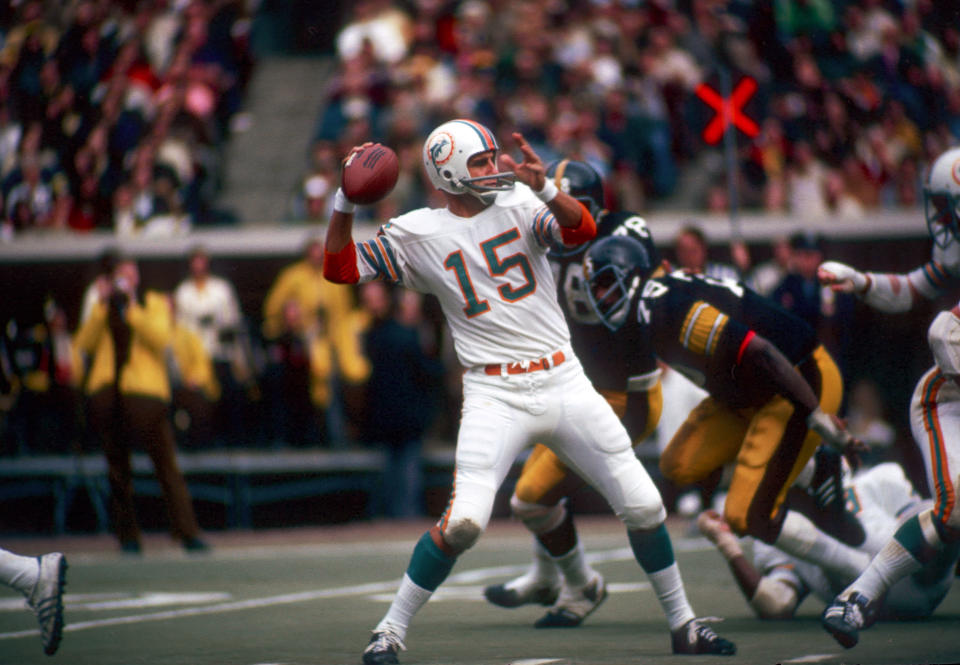
Tony Tomsic-USA TODAY NETWORK
The man who succeeded Unitas as both NFL Most Valuable Player and the Colts’ starting quarterback was Earl Morrall, who threw 26 touchdown passes in his meritorious 1968 campaign. After Baltimore coach Don Shula left to coach the Miami Dolphins in 1970, Morrall eventually joined him in 1972. Morrall was indispensable to the ’72 Dolphins’ perfect season as he started nine of those games. Morrall stayed with Miami through the 1976 season, and ended his career as a three-time Super Bowl champion.
2. Johnny Unitas

(Photo By Malcolm Emmons-USA TODAY Sports)
The three-time NFL Most Valuable Player (1959 1964, 1967) was monumental in establishing the Baltimore Colts as a championship team during his tenure from 1956-72. The Colts traded Unitas to the San Diego Chargers in 1973, and the 40-year-old compiled a 1-3 record.
3. Roman Gabriel

Tony Tomsic-USA TODAY NETWORK
The Los Angeles Rams signal caller won the MVP in 1969, and stayed with the Rams through the 1972 season. Los Angeles traded with the San Diego Chargers for John Hadl in 1973, and sent Gabriel to the Philadelphia Eagles. Gabriel made the Pro Bowl that season, but the Eagles never had a winning season with Gabriel.
4. Ken Stabler

Alvin Chung /Allsport
“Snake,” who won MVP in 1974, was initially traded to the Houston Oilers in 1980 after spending the entire 1970s with the Oakland Raiders. Stabler’s only playoff season was his first one in Houston, as owner Bud Adams fired Wade Phillips after the season. Stabler stayed on with the Oilers for one more year. In 1982, Stabler signed late in preseason with the New Orleans Saints and was reunited with Phillips. Stabler retired in mid-October of the 1984 campaign.
5. Bert Jones

Manny Rubio-USA TODAY Sports
Jones had a phenomenal 1976 campaign with 3,104 passing yards and 24 passing touchdowns to earn his lone NFL MVP. Injuries plagued the remainder of his time in Baltimore. In 1982, Jones played four games for the Los Angeles Rams until a neck injury put a hard stop to his playing career.
6. Boomer Esiason

Rick Stewart /Allsport
Esiason led the NFL with a 97.4 passer rating in 1988 and picked up the league MVP en route to the Cincinnati Bengals’ Super Bowl XXIII appearance. As the Bengals rebuilt in 1993, they traded Esiason to the New York Jets, where Bruce Coslet, Esiason’s offensive coordinator in Cincinnati, was the coach. Esiason stayed with New York through the 1995 season when he signed with the Arizona Cardinals in 1996. Esiason managed to end up back in Cincinnati for his final year and posted a 4-1 record as a starter.
7. Joe Montana
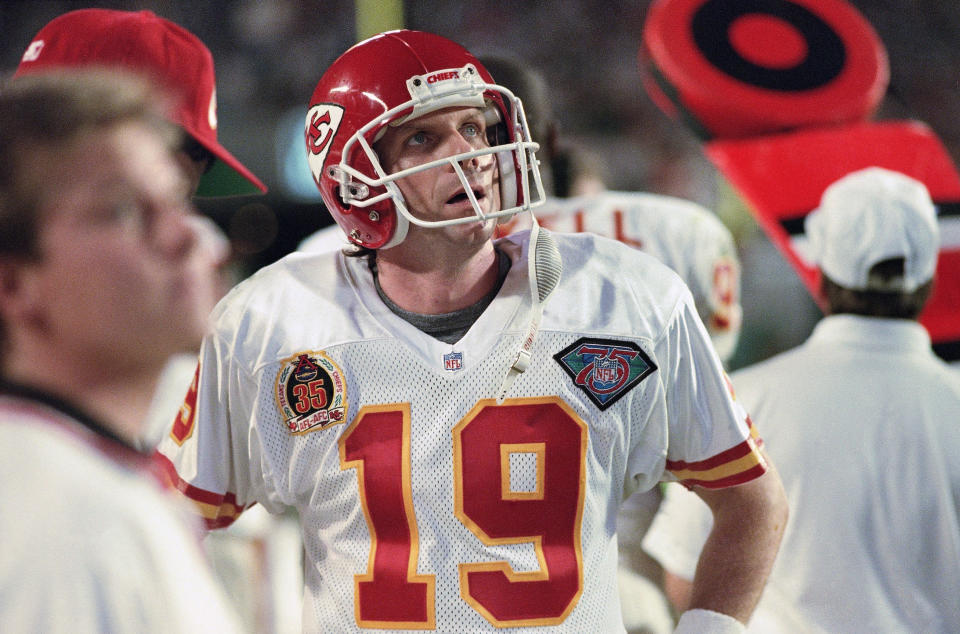
(AP Photo/Wayne Fleisher)
The San Francisco 49ers were all in with Steve Young and sent the two-time MVP (1989-90) to the Kansas City Chiefs in 1993. Montana got the Chiefs as far as the AFC Championship Game at the Buffalo Bills in his first season. In 1994, injuries got the better of Montana as Kansas City wilted in the wild-card to the Miami Dolphins. Montana retired after the season.
8. Kurt Warner
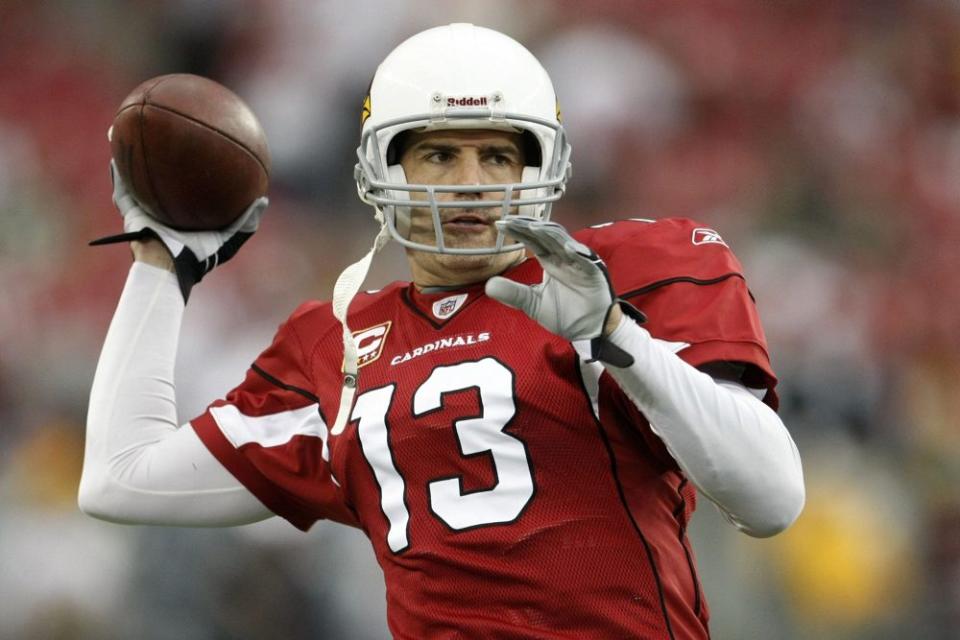
(Getty Images)
Warner was 33 and struggled with injuries in his past two seasons with the St. Louis Rams, who decided to move on to Marc Bulger. Warner was to be a bridge for the New York Giants, who traded in the 2004 NFL draft for Eli Manning, who eventually took over despite Warner guiding the Giants to a 5-4 record. The two-time MVP (1999, 2001) voided the last year of his Giants deal to sign a one-year contract with the Arizona Cardinals, who later extended him another three years at the end of the season. Warner eventually beat out second-year quarterback Matt Leinart in 2007 with rookie coach Ken Whisenhunt seeking the best quarterback, regardless of age. Warner led the Cardinals to an appearance in Super Bowl XLII at the end of the 2008 season. Warner retired after 2009, which was another playoff-bound season for Arizona.
9. Steve McNair

(Photo by Greg Fiume/Getty Images)
The late McNair was co-MVP with Peyton Manning in 2003. In 2006, the Tennessee Titans traded McNair to the Baltimore Ravens as the AFC South club had decided to rebuild with first-round quarterback Vince Young. McNair led Baltimore to a 13-3 record and a first-round bye in his first season. However, the Indianapolis Colts got the better of Baltimore in the playoffs, and injuries marred McNair’s final season in 2007 with the Ravens.
10. Brett Favre
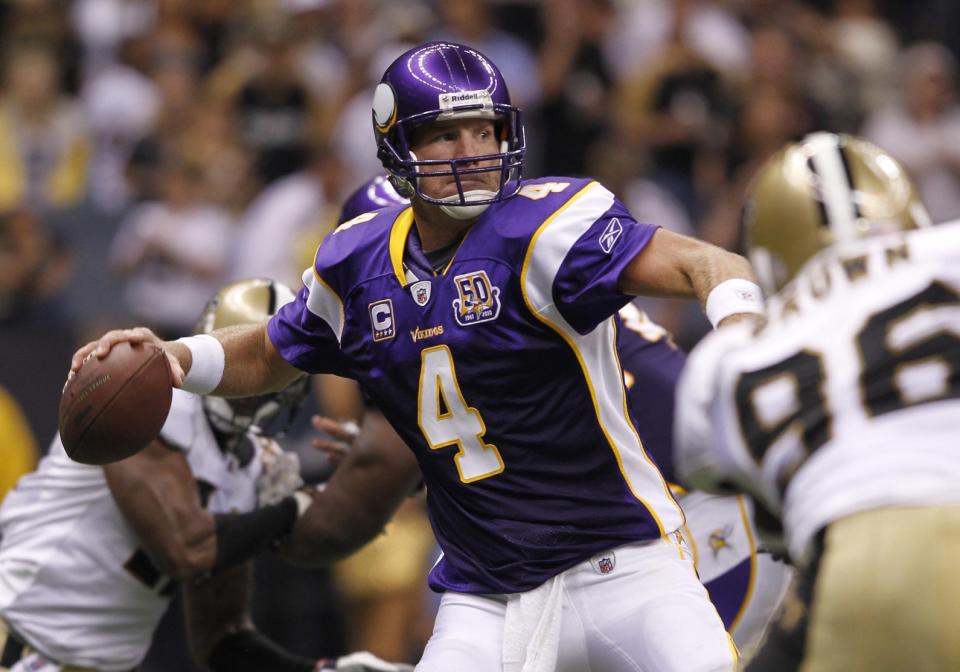
(Derick E. Hingle-USA TODAY Sports)
The Green Bay Packers wanted off the “Favre retirement carousel” and traded the three-time NFL MVP (1995-97) to the New York Jets in the middle of training camp in 2008. After spending a season in the Big Apple, Favre retired again, and the Jets released him from his contract. Then, Favre signed with the Minnesota Vikings in the 2009 preseason to lead the NFC North club to an appearance in the NFC Championship Game. Favre’s final season was not as storybook in 2010 as injuries broke his ironman streak for consecutive starts and kept him out of the last two games.
11. Peyton Manning
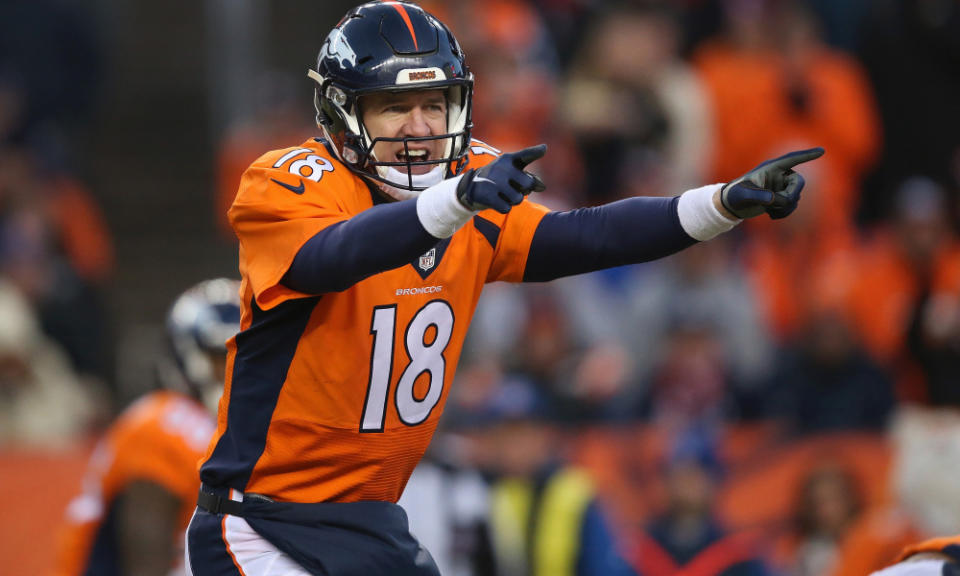
(Photo by Doug Pensinger/Getty Images)
The Colts released Manning after he did not play during the 2011 due to recovering from neck surgery. The four-time NFL MVP (2003-04, 2008-09) did not miss a beat as the Denver Broncos became instant Super Bowl favorites overnight, appearing in one at the end of 2013 and another victoriously at the end of 2015. Manning even added his fifth MVP in 2013.
12. Cam Newton

(AP Photo/Adam Hunger)
Newton was unstoppable in 2015 as the Carolina Panthers compiled a 15-1 record en route to Super Bowl 50, where they faced Manning’s Broncos. The Panthers never got that close to a title in the Newton era, and he was released after 2019. Newton caught on with the New England Patriots in 2020, but was subsequently released in the offseason. The Panthers did bring Newton back in 2021, but he has not played another down since.
13. Tom Brady

Kim Klement-USA TODAY Sports
Another 2020 offseason departure was Brady from the Patriots. The three-time NFL MVP (2007, 2010, 2017) signed with the Tampa Bay Buccaneers and led them to their second Super Bowl victory at the end of the 2020 campaign. The Bucs appeared in the postseason in all three years Brady was there, which was the first time since 2000-02 Tampa Bay qualified for three straight postseasons.
14. Matt Ryan

Trevor Ruszkowski-USA TODAY Sports
The 2016 NFL MVP suffered an ignominious defeat in Super Bowl LII where the Atlanta Falcons could not pull off beating the Patriots despite a 28-3 lead. The Falcons made the playoffs in 2017, but never again while Ryan was on the team through 2021. Atlanta traded Ryan to the Colts in 2022, but the season was a failure as Indianapolis went 4-12-1. Ryan was released during 2023 free agency.
15. Aaron Rodgers

(Photo by Patrick McDermott/Getty Images)
Rodgers won the award four times (2011, 2014, 2020-21), and even after his most recent MVP season, the feeling was his time in Green Bay was about to expire. Can Rodgers join the ranks of Manning as the only quarterbacks able to win NFL MVP with two different teams?
Honorable mention — Brian Sipe

(George Rose/Getty Images)
Sipe led the Cleveland Browns to an 11-5 record and an AFC Central crown while throwing for 4,132 yards and 30 touchdowns in 1980. The Kardiac Kids flatlined in 1981 as Cleveland went 5-11. Sipe was benched during the strike year of 1982, but managed to regain his role in 1983 and even led the Browns to an 8-6 record.
However, Sipe joined the USFL in 1984 as the starting quarterback for the New Jersey Generals. Sipe finished out his USFL career with the Jacksonville Bulls in 1985.

